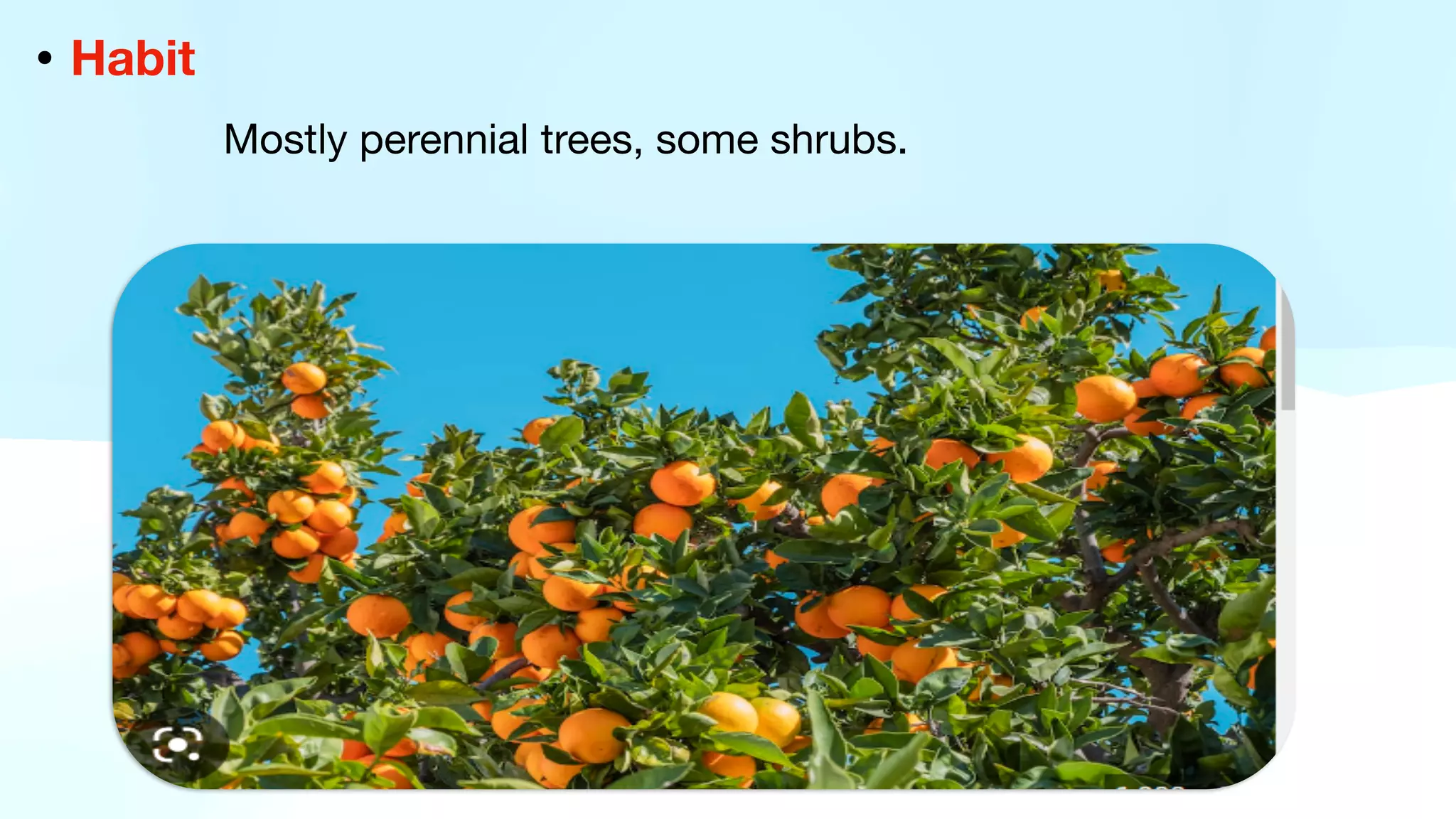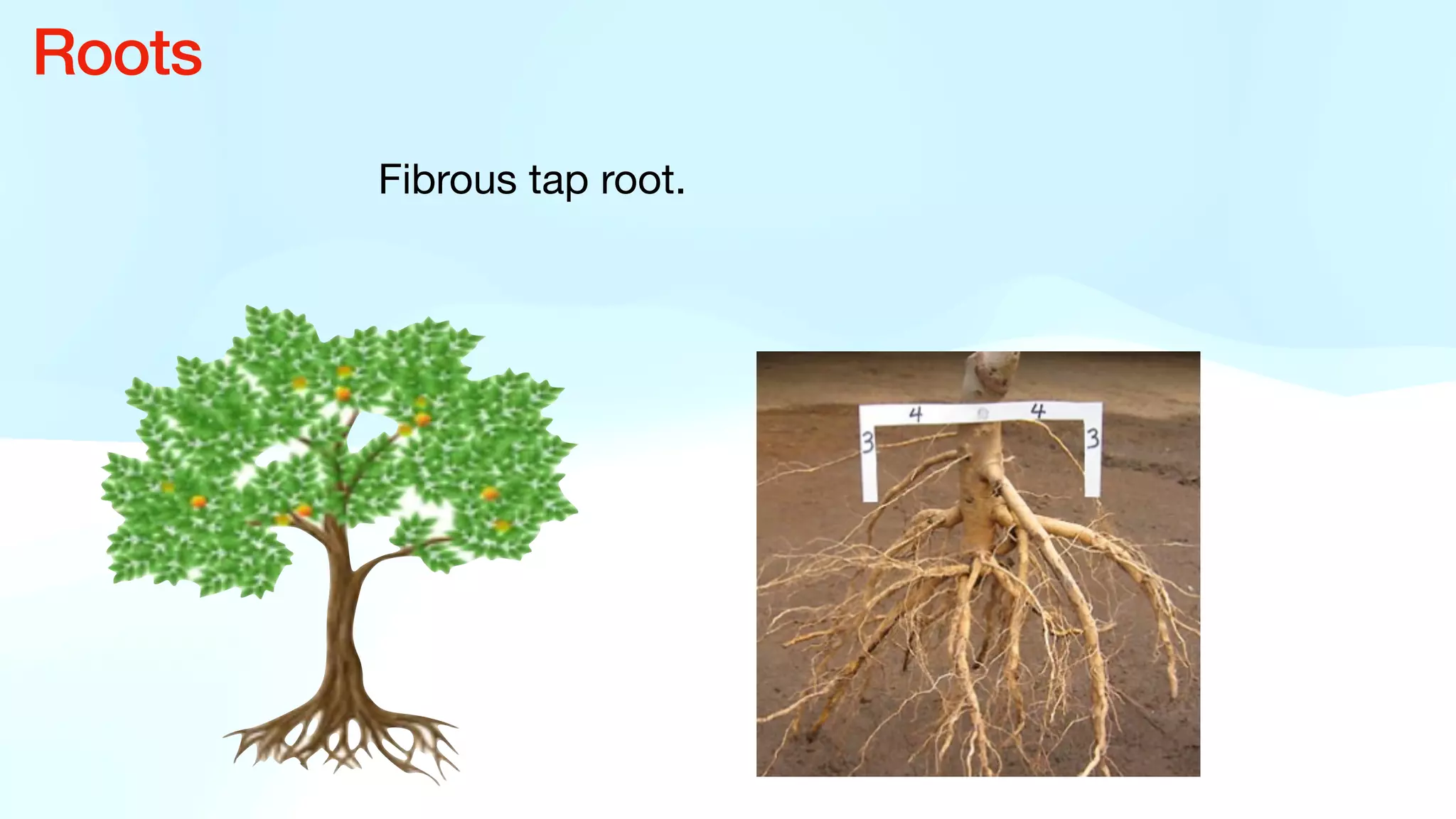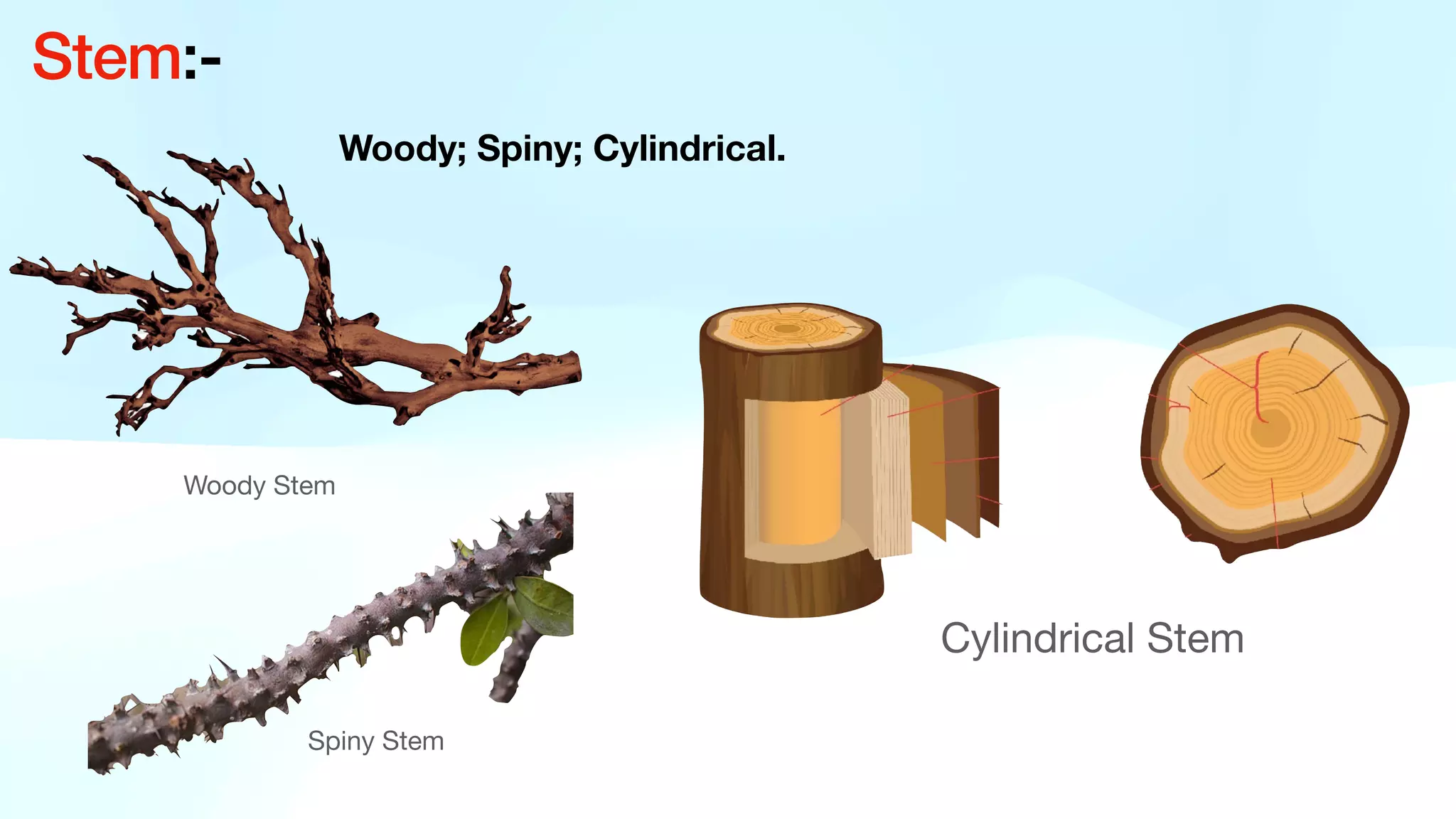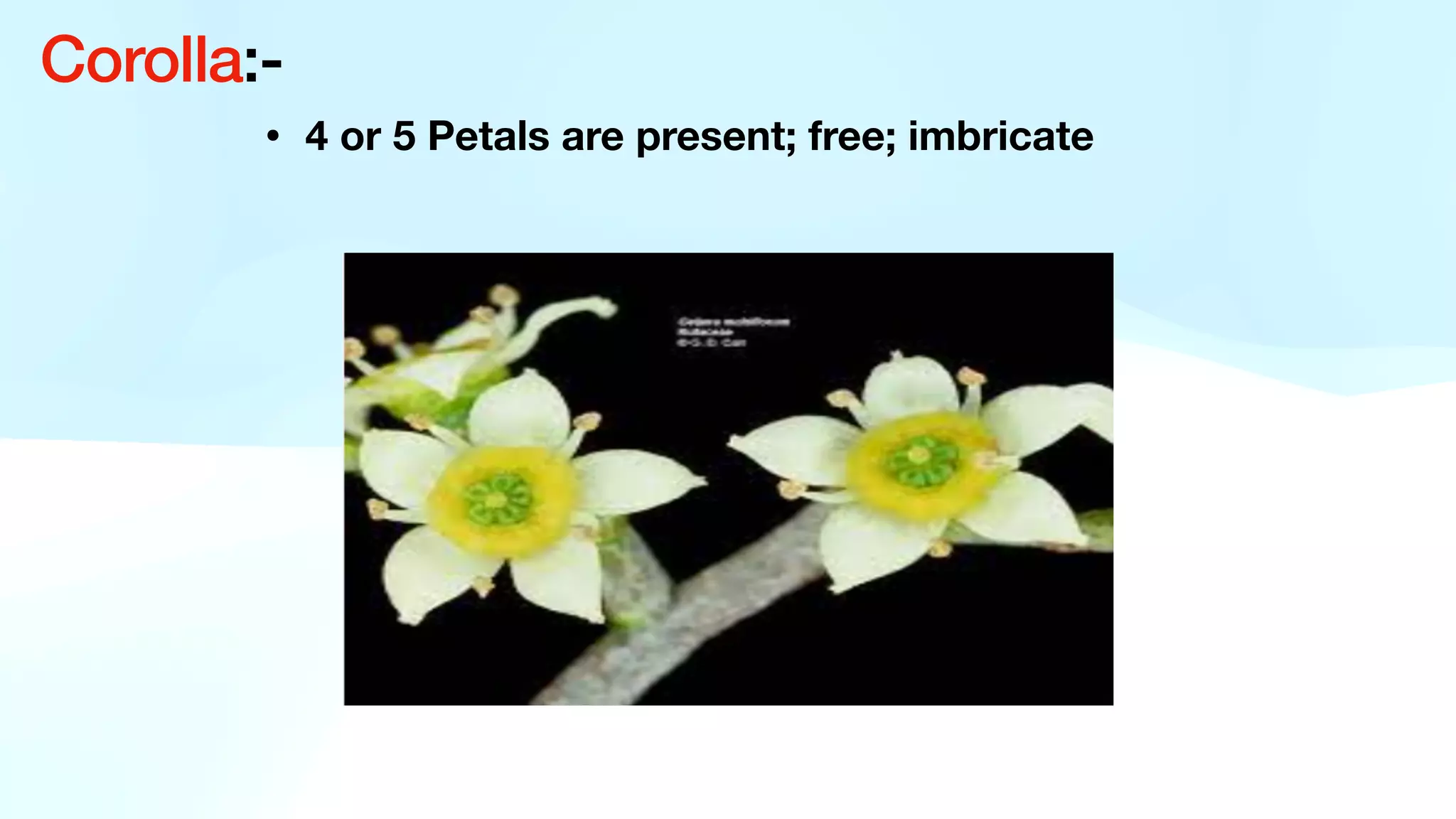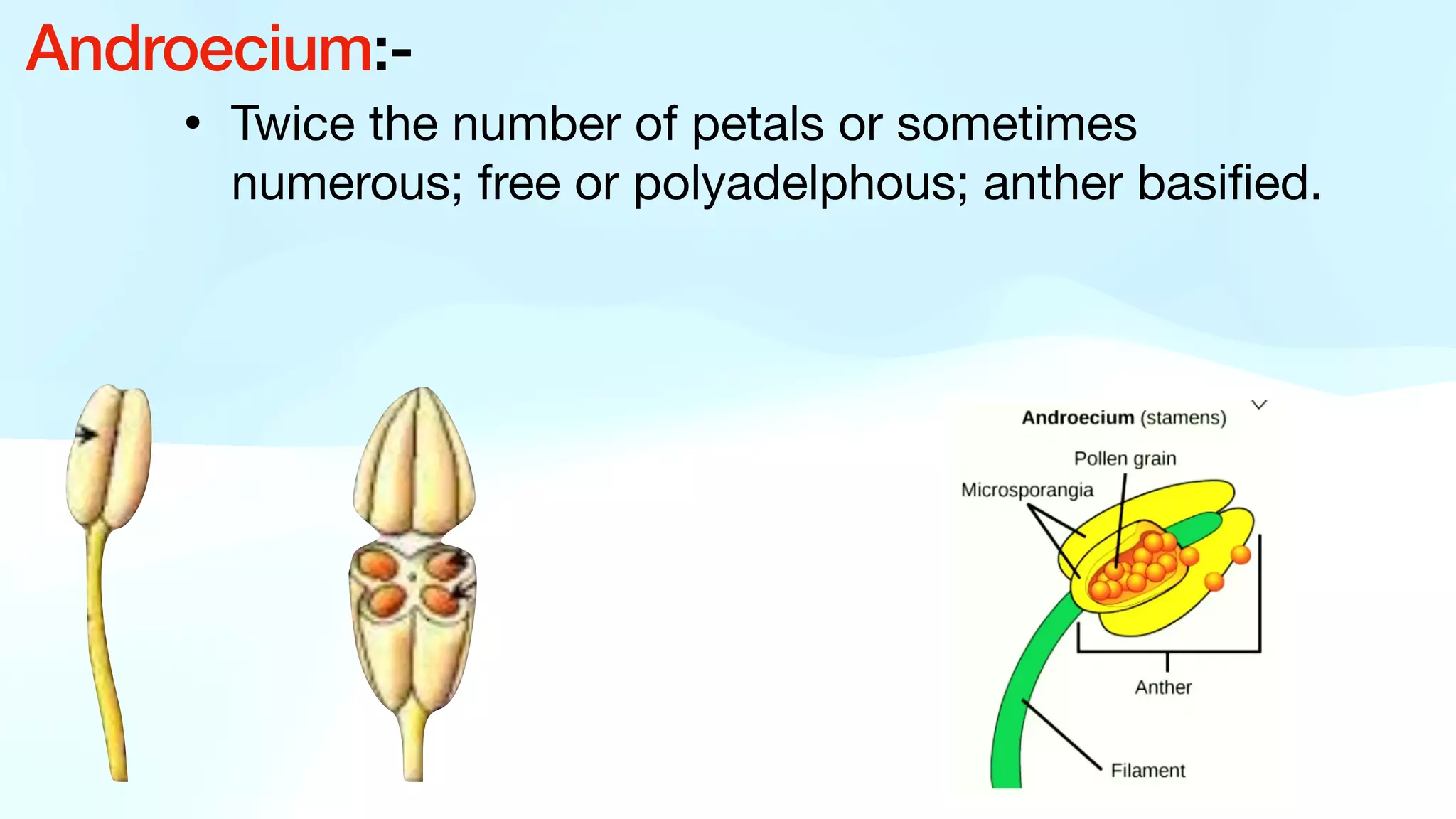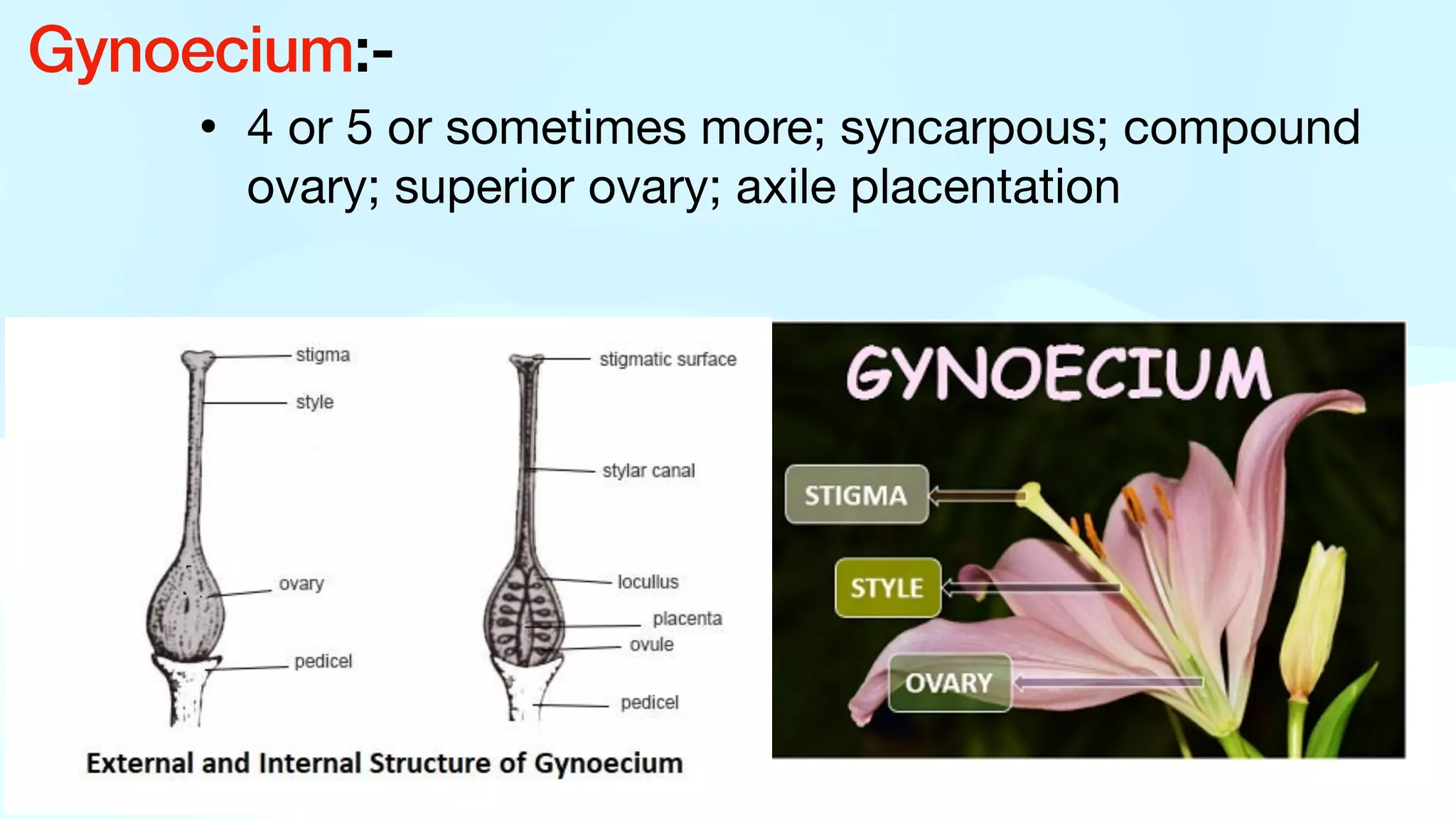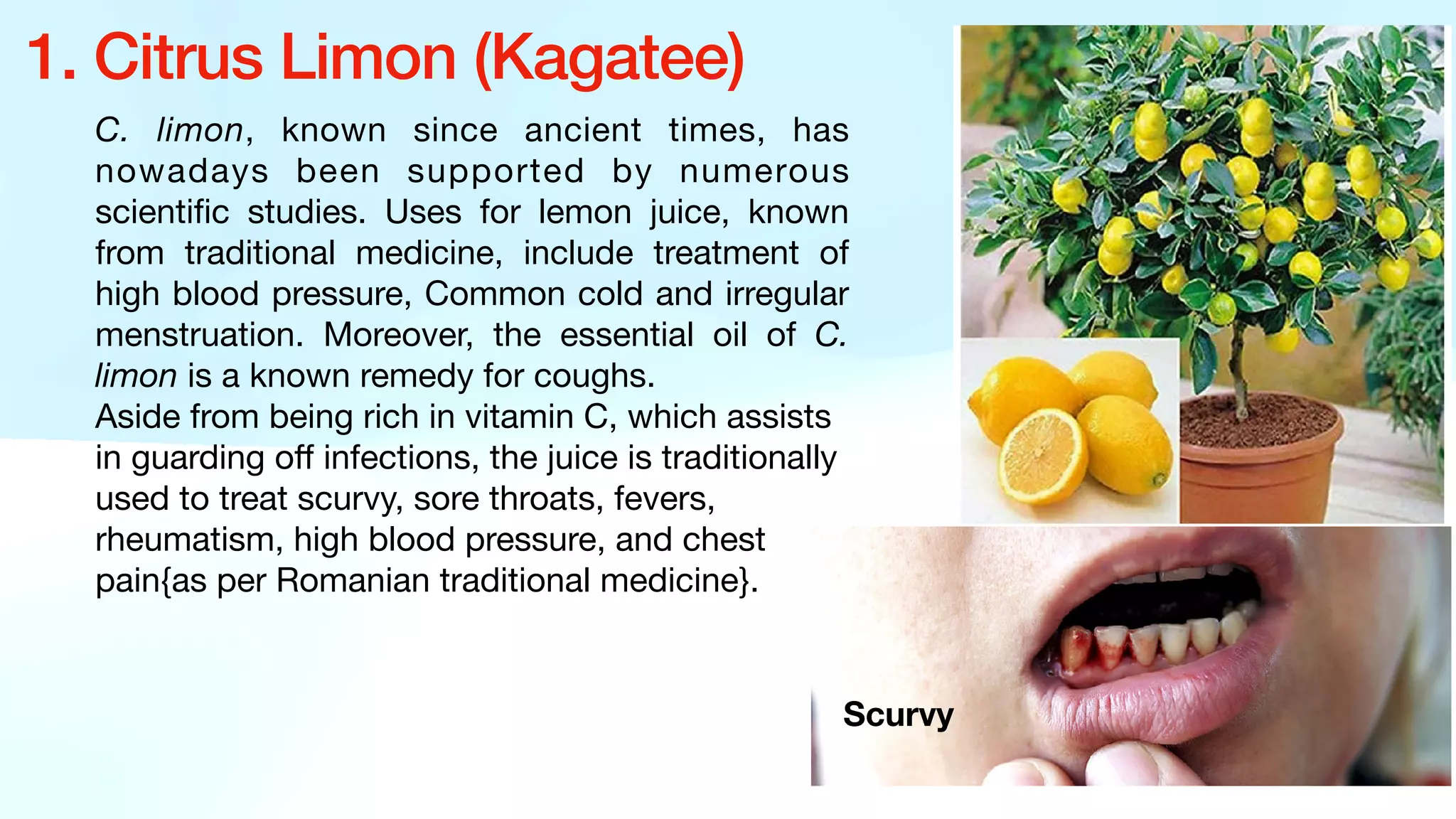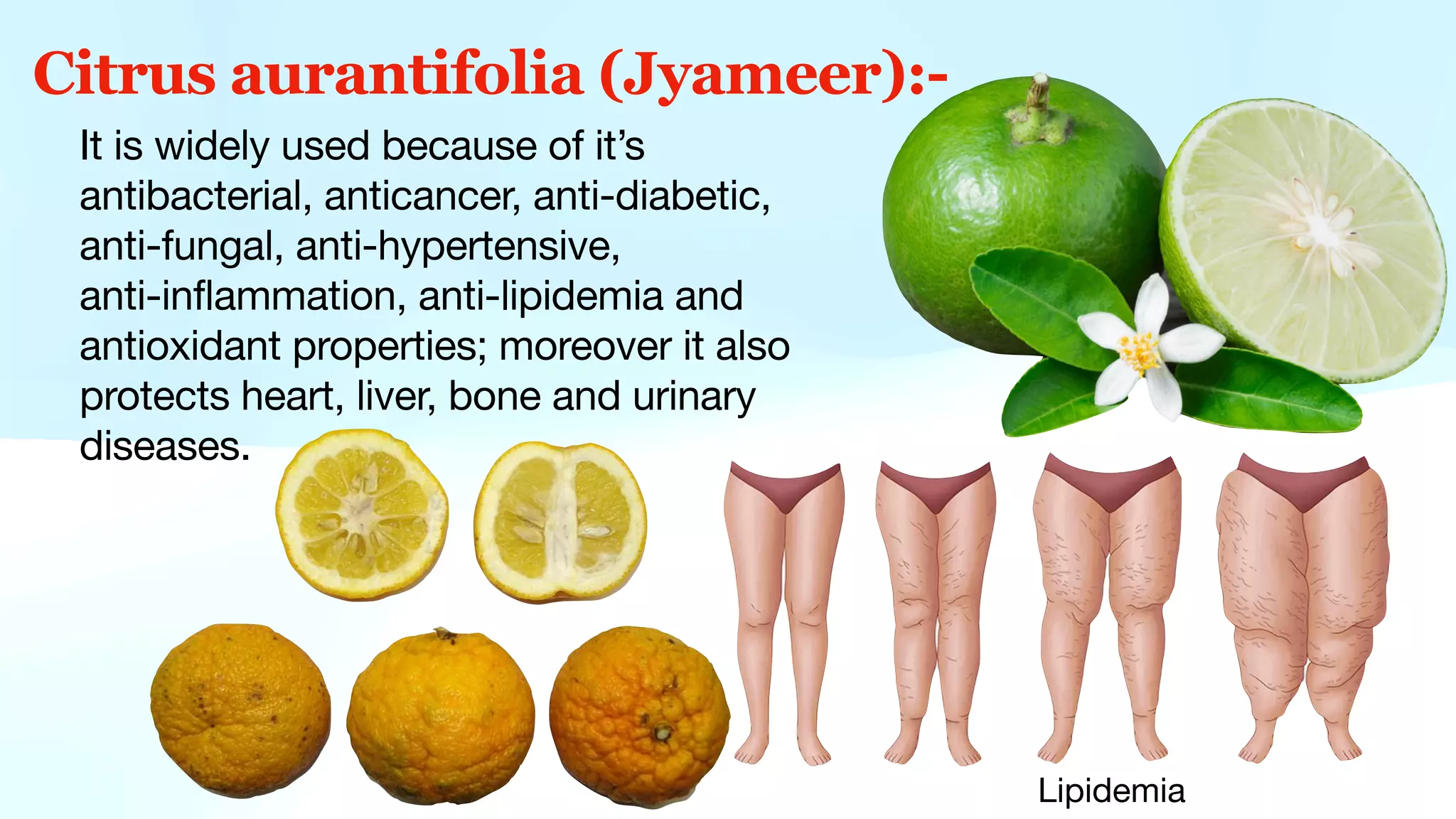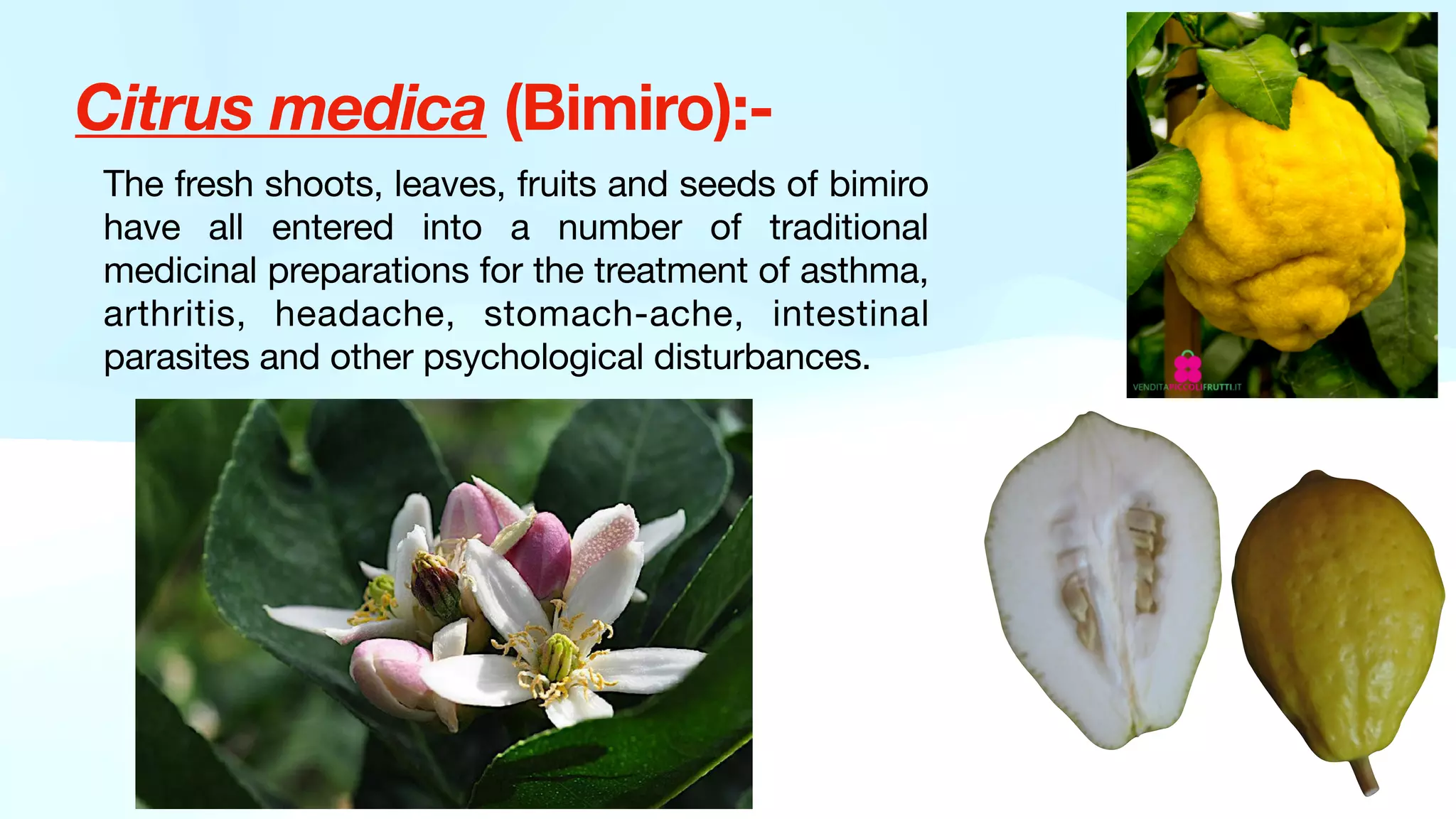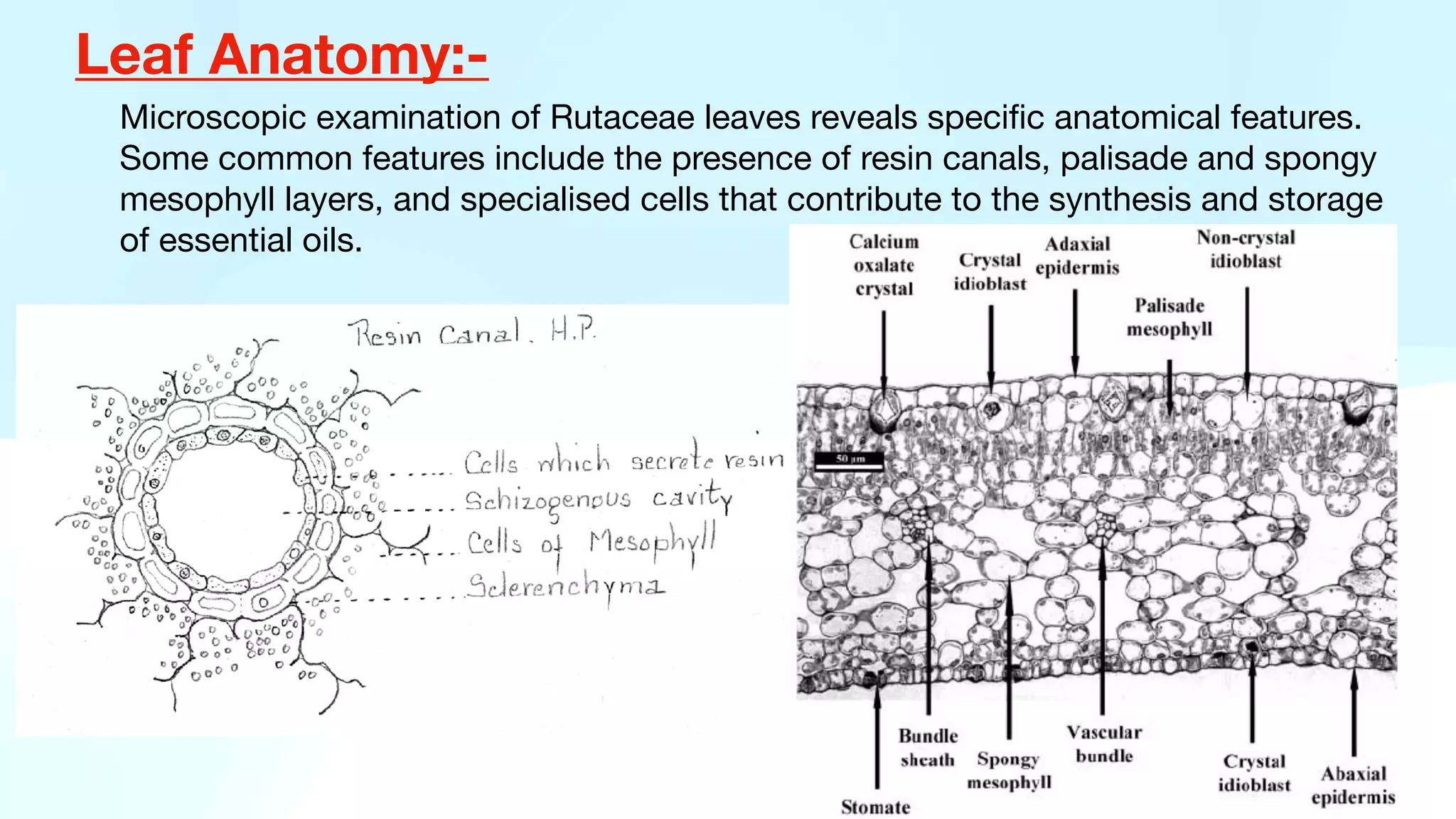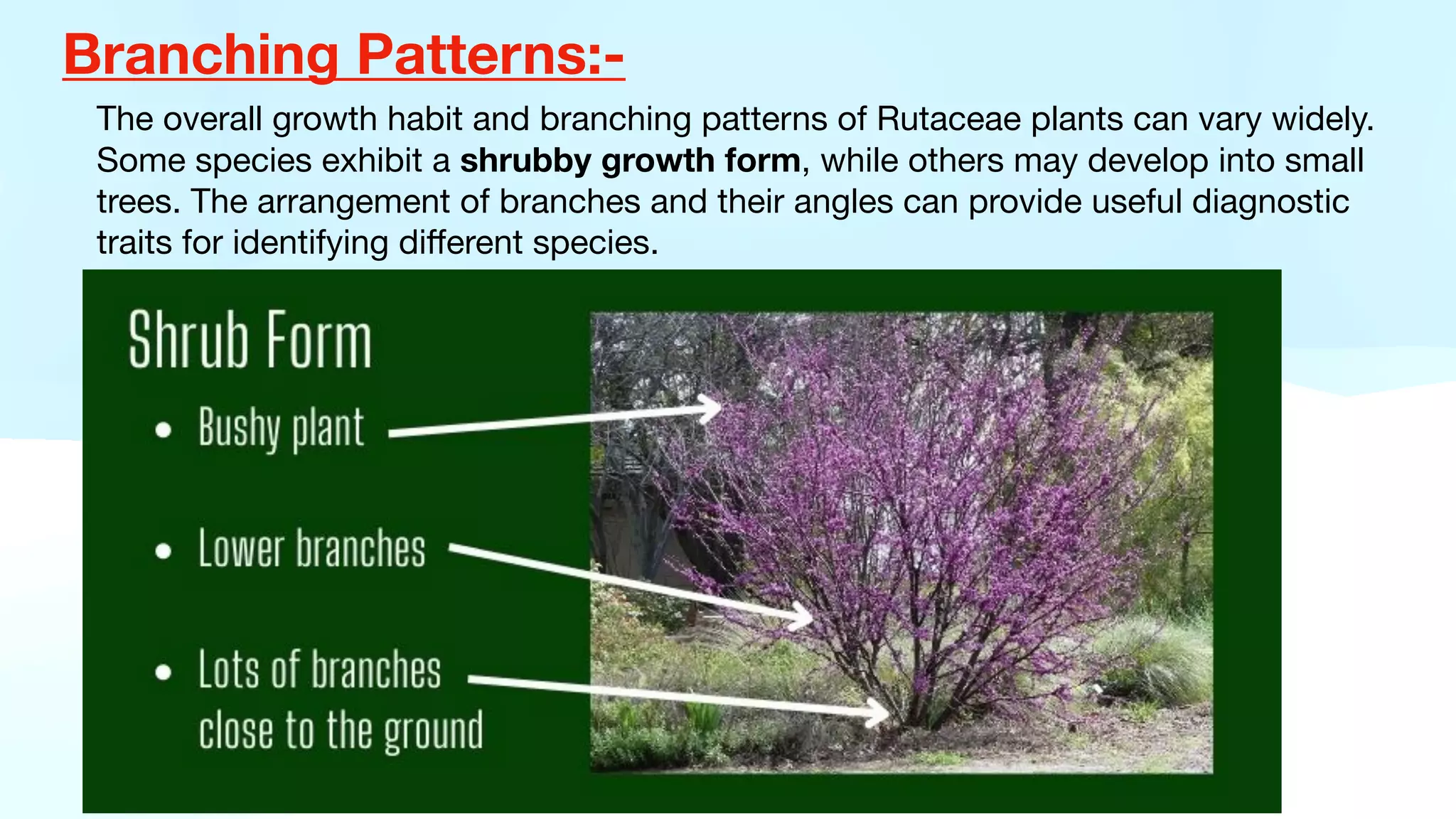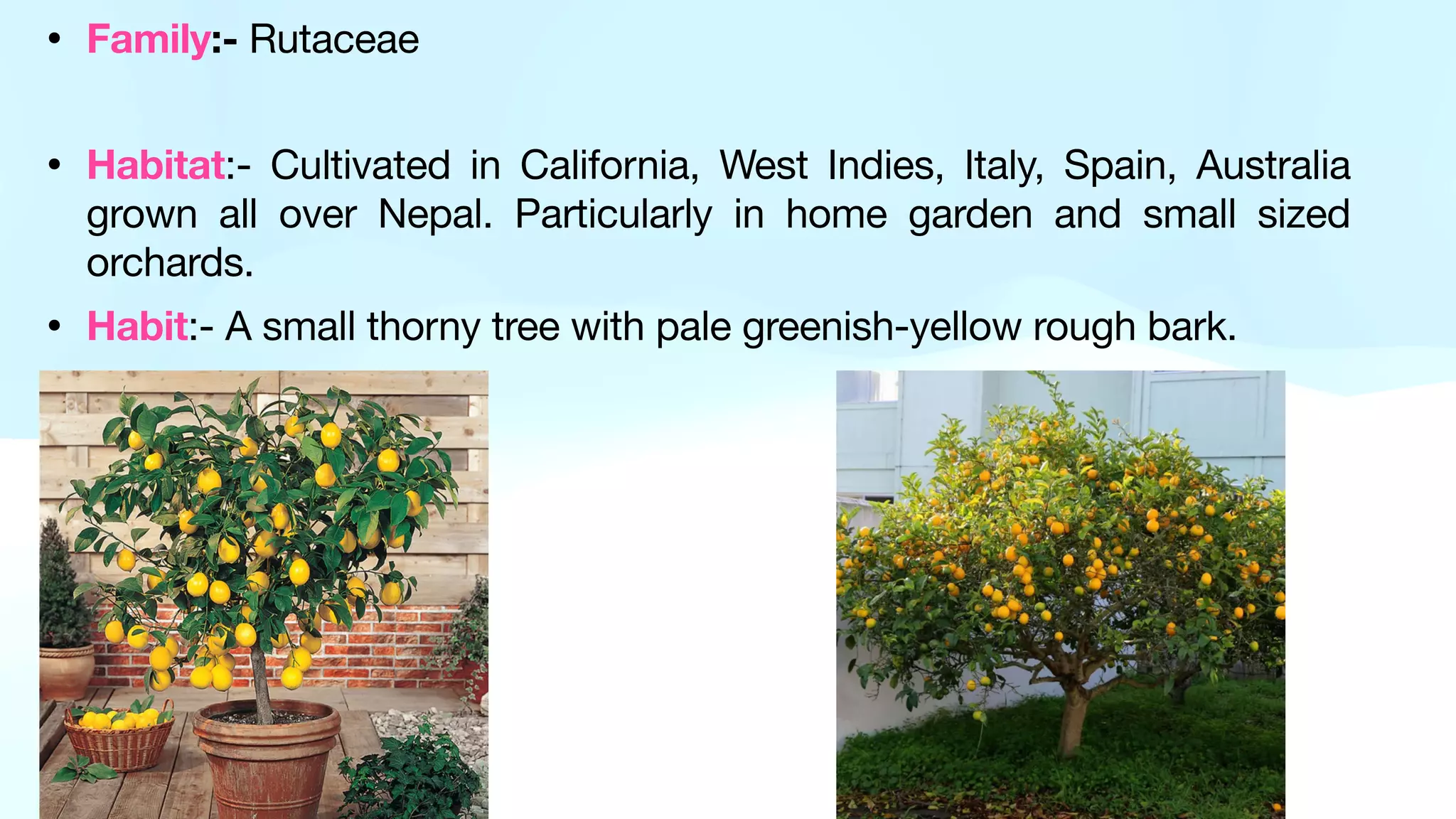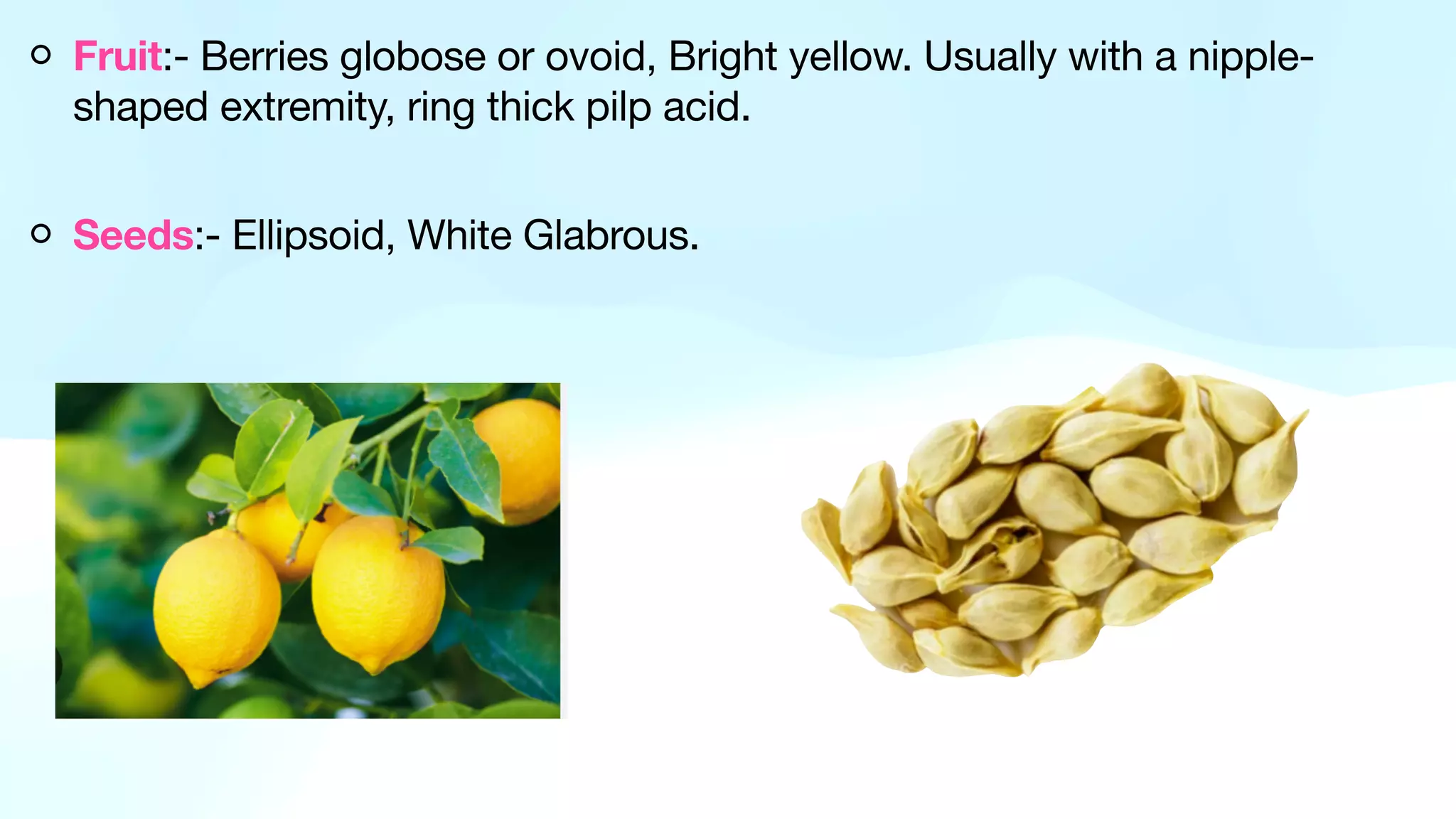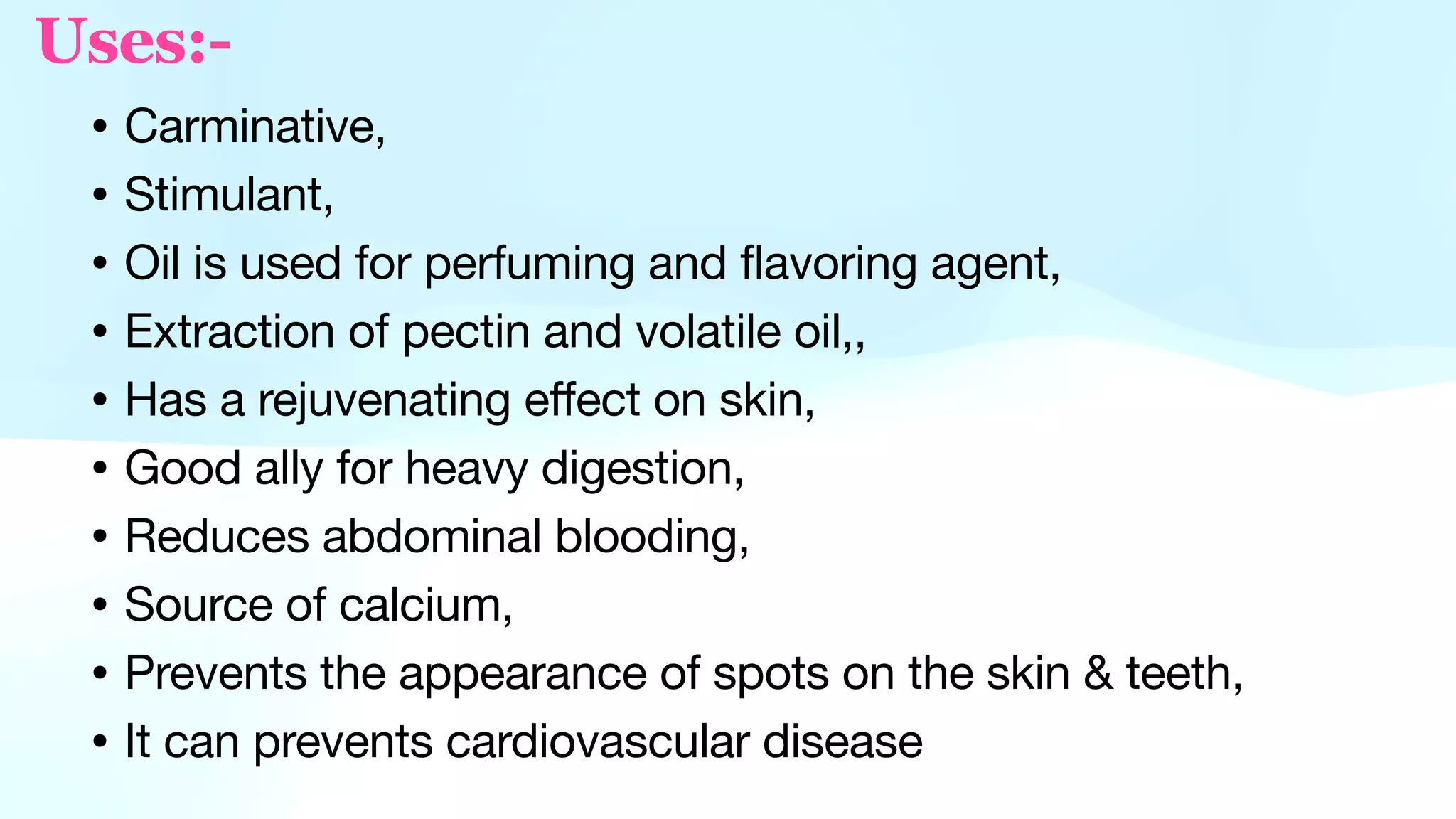The document provides a detailed overview of the Rutaceae family, highlighting its medicinal significance and describing various species such as Citrus limon and their therapeutic properties. Key features include the physical and chemical attributes of these plants, their distribution, and historical uses in treating conditions like respiratory issues and digestive disorders. Additionally, it notes the unique botanical characteristics of Rutaceae, including glandular trichomes and aromatic oils, which enhance their medicinal potential.


